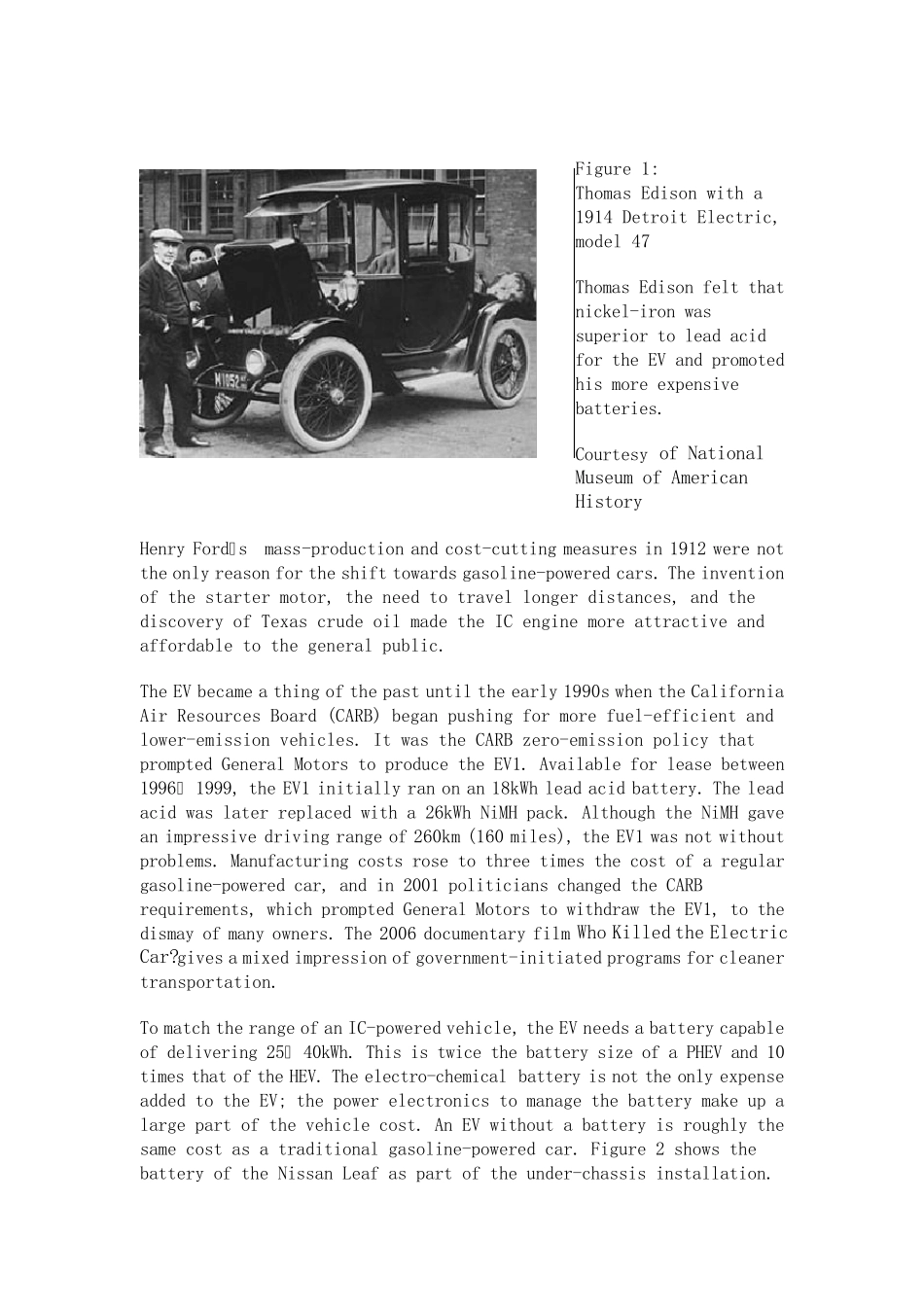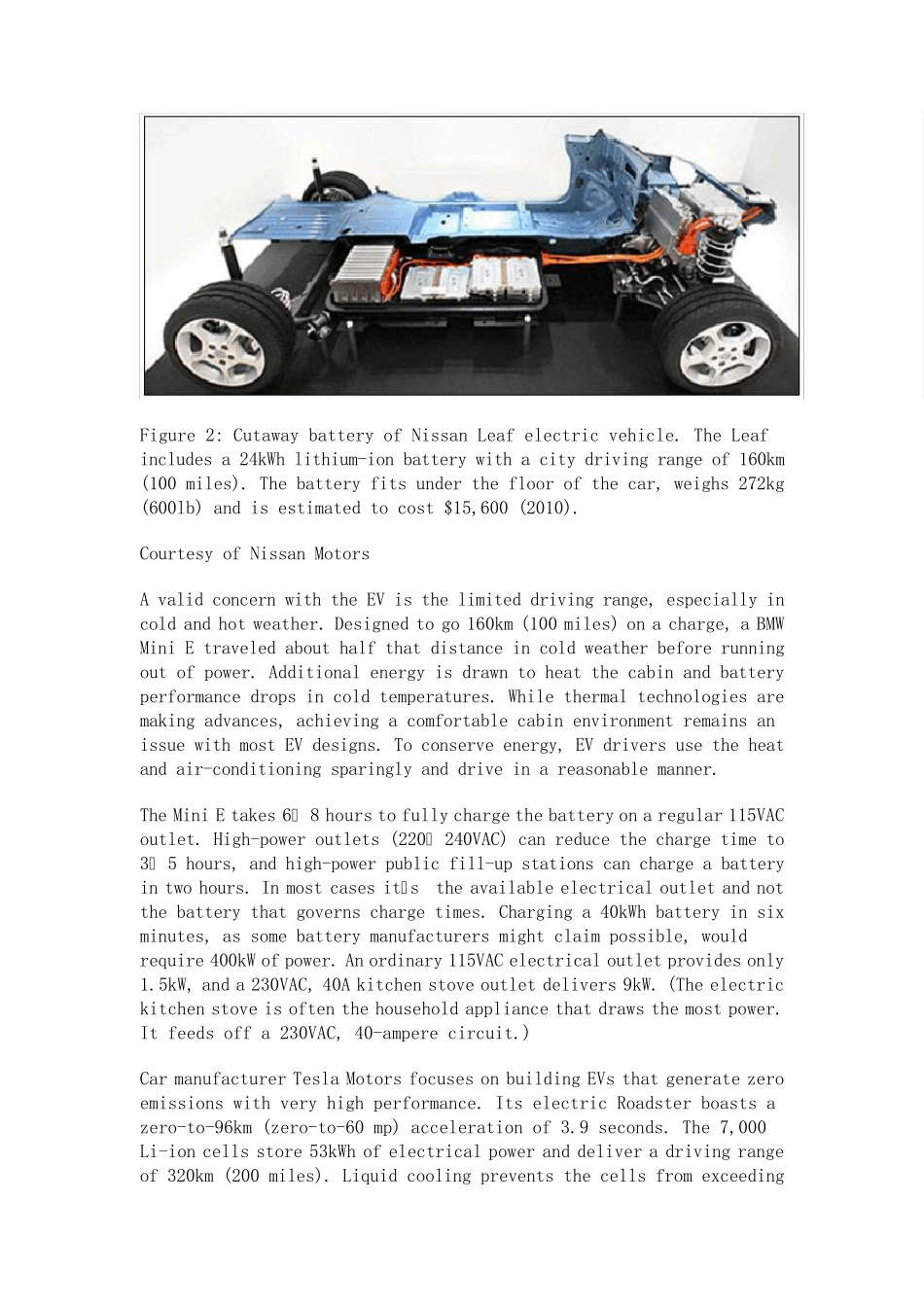Electric Vehicle Cars with electric powertrains have been around for more than 100 years. At the turn of the century, a car buyer had three choices of propulsion system: electric, steam, and internal combustion (IC) engine, of which the IC engine was the least common. The electric cars appealed to the upper class and the vehicles were finished with fancy interiors and expensive materials. Although they were higher in price than the steam and gasoline-powered vehicles, the wealthy chose the electric car for its quiet and comfortable ride over the vibration, smell and high maintenance of gasoline-powered counterpart. Best of all, the electric vehicle (EV) did not require changing gears. Back then, the knuckle busting, wrist-wrenching chore of shifting gears was the most dreaded task for driving a gasoline-powered car. Nor did the EV need manual cranking to start the motor, a task the upper class did not want to be seen doing. Since the only good roads were in town, the limited range of the EV was no problem, and most of the driving was local commuting. Production of the EV peaked in 1912 and continued until the 1920s. The battery of choice for the EV was lead acid. For an added fee, the buyer could fit the Detroit Electric with a nickel-iron (NiFe) battery, a technology Thomas Edison promoted. NiFe had a cell voltage of 1.2V, was robust and could endure overcharging and repeated full discharging. Being a good businessman, Edison continued to promote NiFe over lead acid by boasting its good performance at subfreezing and hot temperatures. Then in 1914, a devastating fire destroyed the Edison factory and the popularity for this battery began to decline. On a purely technological level, Ni...


